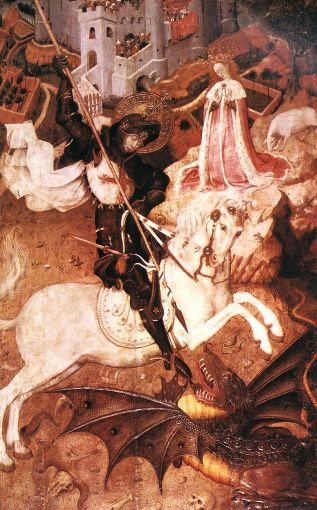| Why Saint George is our patron? |
 |
Dragons are mythical creatures typically depicted as a large and powerful serpent or other reptile with magical or spiritual qualities. Dragons are legendary for their ability to breathe fire. The fire from the mouth of the dragon is symbolical for harmful effects on human health stemming from the mouth. Saint George is held to be a legendary dragon slayer.
Saint George, half Turkish and half Palestinian, was born in Cappadocia, |
in modern day Turkey to an army soldier and a mother from Lydda, now known as Lod in Palestine. After his father’s death, George’s mother took her infant son back to her home town of Lydda where he grew up to serve as an officer in the Roman army, like his father before him. When ordered by a pagan ruler, the Emperor Diocletian, to pay tribute to Roman gods, he refused and faced prolonged periods of torture – in some stories as long as seven years, ending with a gruesome death: sliced in half and beheaded.
From this rather grisly end he has become a hero and a national icon for many. From Canada to Moscow, Boy Scouts to saddle makers, Palestine to England, he is celebrated the world over. In Groningen, the Netherlands, his monument is the site for the yearly commemoration of victims of war on the 4th of may, “doden herdenking”. Anthony Cooney, author of the books, The Story of St George and Saint George: Knight of Lydda, commented on George as a “man for all people”, not being confined to one country or a single cause. St George is the mythical dragon slayer who sacrificed himself to save the life of a beautiful woman and the humble Palestinian soldier who died defending his faith. St Georges reflects an aspiration – selflessness, bravery, faith, courage and a commitment to what you believe to be right. With these aspirations we hope to extinguish the fire from the mouth of the dragon.
Sources:
http://en.wikipedia.org/wiki/Saint_George http://www.emelmagazine.com/main.php?splash=2&is_idfk2=326 |
|
